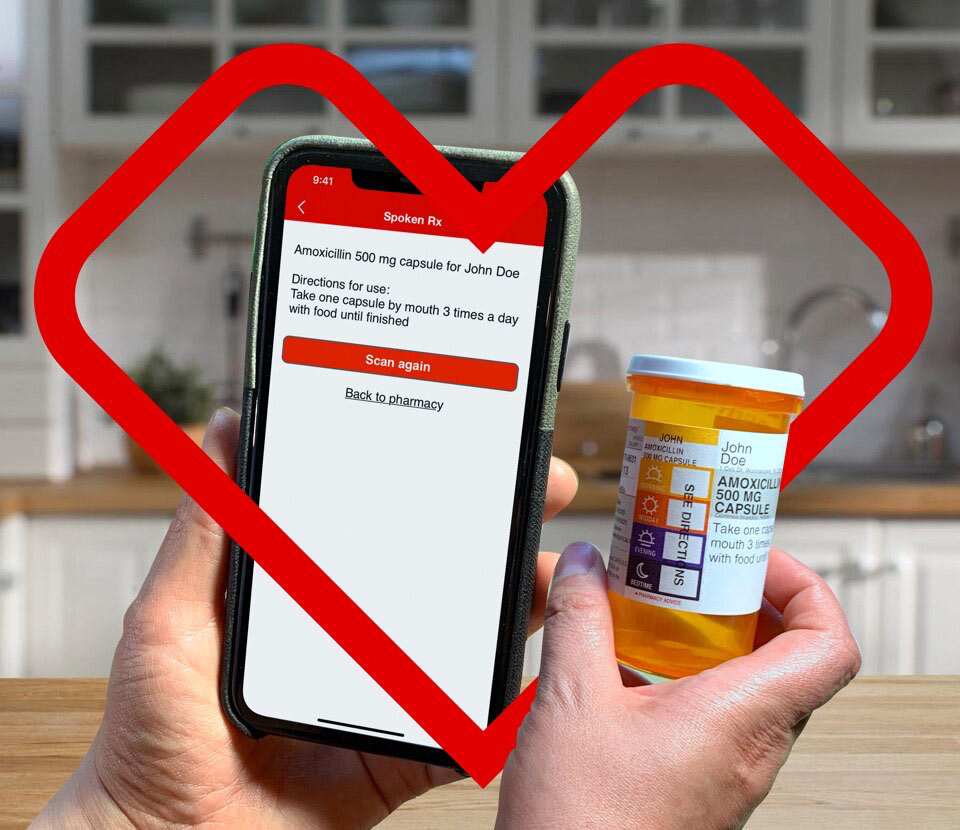Printed Electronics Now: CVS Pharmacy, Identiv Develop Spoken Rx for Visually-Impaired Patients
December 8, 2021
Article originally published by David Savastano, Editor, via
Printed Electronics Now.

For people who have sight disabilities, taking the right dosage or medication can be a major challenge. Using Braille is one way to get the information; having someone read the instructions is another, although that requires someone be there. However, CVS Pharmacy, the retail division of
CVS Health, in conjunction with the
American Council of the Blind and RFID specialist Identiv, have come up with Spoken RX, an intriguing solution.
A free program from CVS, Spoken Rx can read a specific type of label that is affixed to the bottom of each prescription container for patients who have enrolled in the program. The information includes patient and medication name and instructions. Spoken Rx is available in English and Spanish, and is easy to use.
Customers can sign up to receive RFID tags on their prescriptions. This can be done over the phone or in person at all CVS locations. Spoken RX is also a free download on Apple App Store or Google Play Store.
CVS is offering Spoken RX at all its nearly 10,000 pharmacy locations nationwide, including more than 1,700 CVS Pharmacy locations within Target.
“We continue to remove barriers to health care for all patients, and this in-app technology furthers our commitment by providing patients added flexibility and independence,” said Jared Tancrelle, SVP, store operations at CVS Health, said in the announcement. “Our patients are increasingly digitally connected, so Digital tools like Spoken Rx are a priority for us as we listen to feedback and adapt our suite of pharmacy services and programs to ensure we’re best meeting the needs of all consumers.”
“This is a positive step that offers same-day, access for prescriptions filled in CVS stores. Spoken Rx allows for a greater level of privacy, safety, and independence for blind and visually impaired customers,” said Eric Bridges, executive director for the American Council of the Blind, in announcing Spoken Rx.
Louis Modell, VP sales, Americas for Identiv, noted that Identiv has been working with CVS on the tags since 2018, with the first roll out of RFID tags and readers beginning in April 2020. CVS ran pilot projects in all locations throughout 2021. Modell said the feedback is excellent.
“We are providing the RFID labels as well as uTrust 3700 contactless readers for the encoding of the RFID tags for each prescription,” said Modell. “Each pill bottle must be encoded with the medication and dosage information at the time the pharmacist fills the prescription. This is done by placing the pill bottle (with RFID Tag) on our contactless Reader and encoding that information using the CVS-developed backend system.”
“Using a mobile phone enabled with NFC, a quick tap of the pill bottle will read out loud the medication, dosage, directions and any other pertinent information,” Modell said. “Users can also use Siri or Google Assistant to help navigate.”
Amir Khoshniyati, GM and VP, Transponder Business for Identiv, said that Spoken Rx’s RFID technology is an ideal blend of pharma and smart Packaging.
“We have a few verticals that we are focused on,” said Khoshniyati. “The top tier is healthcare and pharma, followed by Smart Packaging. This is a hybrid of pharma and smart packaging, and it goes a long way because it is helping the community.”
For Identiv, CVS is an ideal partner as it already has the backend platform covered.
“One of the advantages of CVS is that it has its own backend platform that houses the prescription and patient information, which makes it a lot easier for us as we provide the hardware,” Khoshniyati observed. “Usually you are scrambling to piece the solution together, but CVS has all the critical data already. They plug in our reader and it is off and running.”
Identiv sees plenty of opportunities ahead for the technology. For example, there is the potential that pharma companies can use this technology in place of the detailed instructions that are being printed out in every medicine package.
“This is able to cut the details into the description and instructions,” said Khoshniyati. “We have quite a Bit in the pharma stream industry – the starting point is validation and Authentication, and then the description itself. We are getting validation and adding compliance as well.
“This could extend into the entire consumer base,” Khoshniyati added. “In the era we are in now, this type of application is becoming more and more of a norm, and shows that NFC is becoming more and more a tool to engage with every physical object.”